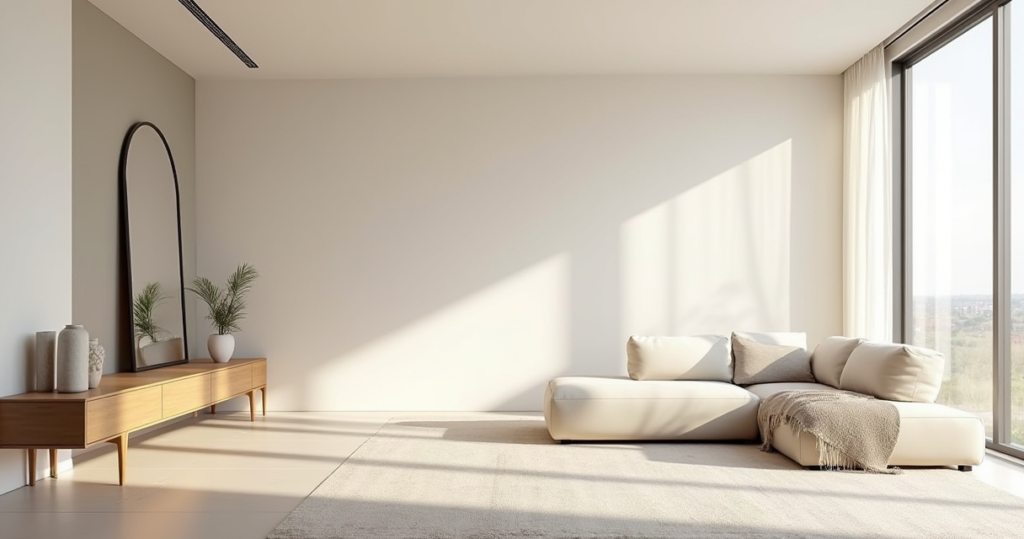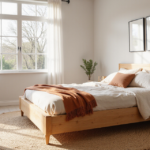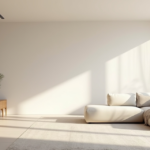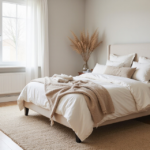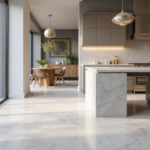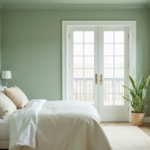Imagine stepping into a living room where every element works in perfect harmony—where sleek sophistication meets genuine comfort, and cutting-edge design feels effortlessly livable. This is the magic of contemporary design: creating spaces that are both visually stunning and deeply functional for modern life. Whether you’re starting fresh or refreshing an existing space, the right contemporary approach can transform your living room into the sophisticated heart of your home.
The beauty of contemporary design lies in its adaptability to your unique lifestyle. It’s not about following rigid rules or creating museum-like spaces, but rather about curating an environment that celebrates clean lines, thoughtful functionality, and personal expression. From strategic lighting that shifts throughout the day to furniture that serves multiple purposes, these design principles work together to create rooms that feel both current and timeless.
Get ready to discover 19 transformative ideas that will help you craft a contemporary living room that’s uniquely yours. Each approach offers practical strategies you can implement immediately, whether you’re working with a compact urban apartment or an expansive open-plan home. Let’s dive into creating a space that perfectly balances modern elegance with everyday comfort.
1. Embrace Open Floor Plans with Strategic Zoning
The foundation of contemporary living starts with embracing open, flowing spaces that feel expansive and unconfined. Strategic zoning allows you to define distinct functional areas within larger rooms without relying on walls or permanent barriers. This approach maximizes natural light flow while creating intimate pockets for different activities—from quiet reading corners to vibrant entertainment zones.
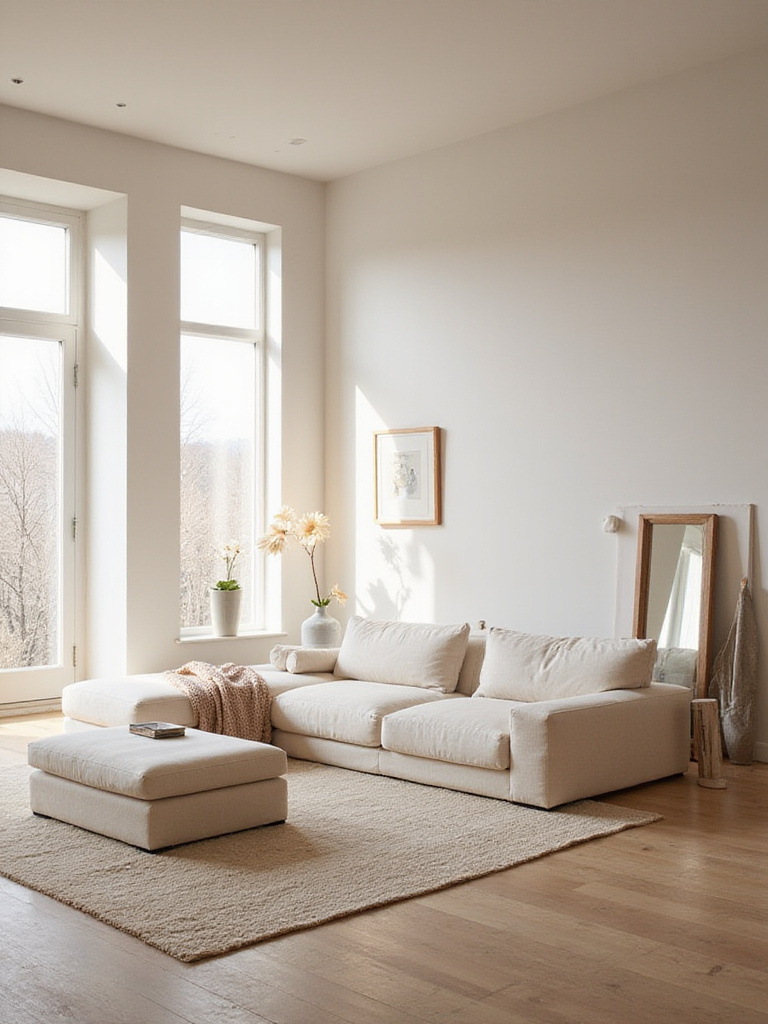
The magic happens when you use furniture placement, area rugs, and lighting to create invisible boundaries that guide movement and purpose throughout your space. A thoughtfully positioned sectional can anchor your main seating area, while a console table behind it subtly separates the living zone from a dining area. This technique works particularly well in urban homes where every square foot needs to serve multiple functions, allowing you to host dinner parties and enjoy quiet mornings in the same beautifully cohesive space.
- Define conversation areas with furniture groupings that encourage face-to-face interaction
- Use area rugs as visual anchors to ground each zone
- Position lighting strategically to create distinct moods for different areas
- Maintain clear pathways between zones for natural traffic flow
What makes this design philosophy special is the way it adapts to your changing needs throughout the day. Morning yoga sessions, afternoon work calls, and evening gatherings all find their perfect spot within your carefully zoned space.
2. Layer Neutral Tones with Textural Depth
Building on your open foundation, the next step involves creating a sophisticated color story through layered neutrals that feel anything but boring. The secret lies in varying textures, finishes, and subtle tonal shifts within your neutral palette—think warm whites paired with cool grays, or soft beiges accented with deeper taupe elements. This approach creates visual depth while maintaining the serene, uncluttered aesthetic that defines contemporary style.
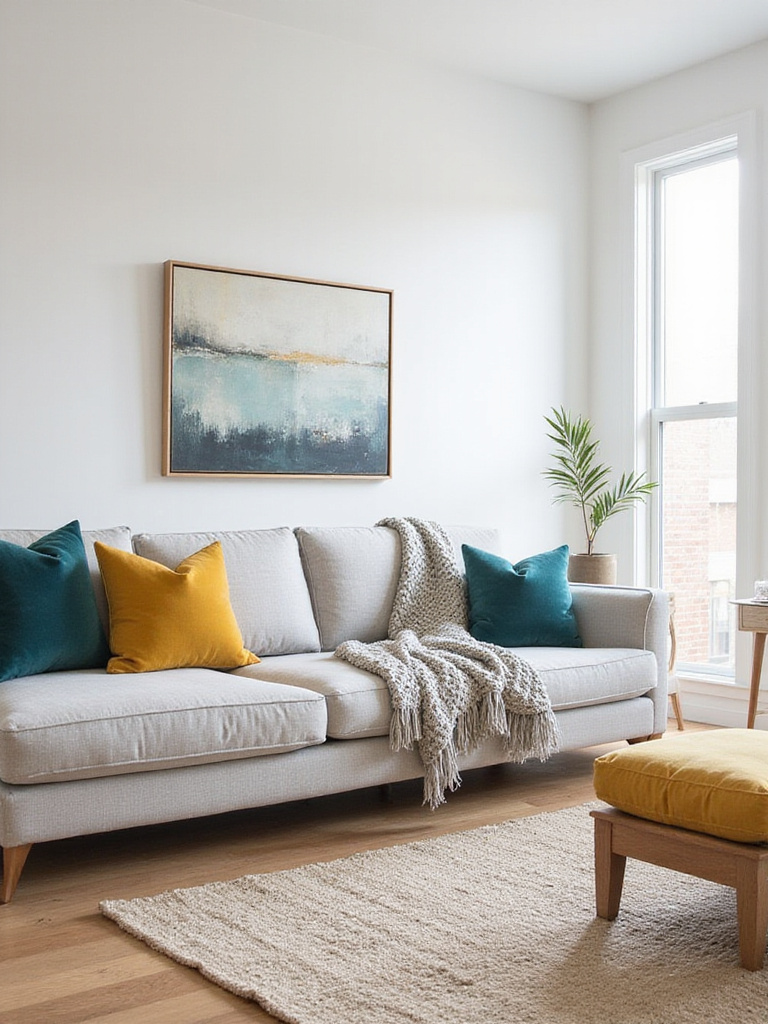
The beauty of a well-executed neutral scheme reveals itself in how different materials catch and reflect light throughout the day. A smooth concrete coffee table might contrast beautifully with a chunky knit throw, while polished metal accents add sparkle against matte wall finishes. These textural conversations prevent your space from feeling flat or sterile, instead creating a rich tapestry that invites both visual exploration and physical comfort.
Consider how a single accent wall in warm charcoal can anchor lighter furnishings, or how varying pile heights in your area rug add subtle dimension underfoot. The key is building layers gradually—starting with larger neutral pieces and adding textural interest through accessories, fabrics, and finishes that complement rather than compete.
As afternoon light streams through your windows, these textured neutral layers create a play of shadows and warmth that transforms the entire room’s atmosphere…
3. Invest in Statement Furniture with Clean Lines
Contemporary design celebrates furniture as functional sculpture, where each piece serves a purpose while contributing to the room’s overall artistic composition. Look for seating with geometric silhouettes, tables with interesting architectural details, and storage pieces that feel more like art installations than mere utility. These statement pieces become the visual anchors around which your entire room revolves.
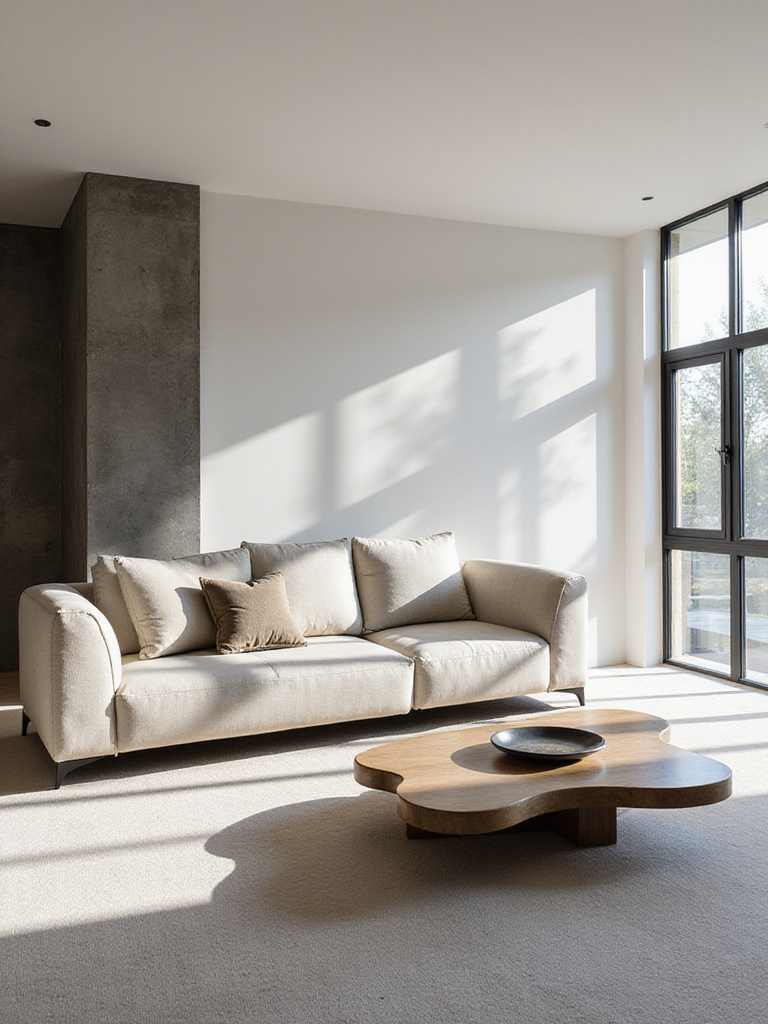
The most successful contemporary furniture choices balance bold form with practical function. A low-profile sectional with crisp edges might provide ample seating while maintaining clean sightlines across your space. Similarly, a dining table with an unexpected base design or a media console with interesting proportions can serve their intended purpose while adding sculptural interest that elevates the entire room’s sophistication.
When selecting statement pieces, consider how they’ll interact with your space’s architecture and natural light. Furniture with interesting cutouts or cantilevers can create fascinating shadow patterns, while pieces in unexpected materials—like a glass coffee table or metal accent chair—add visual lightness that keeps your room feeling open and airy.
The craftsmanship reveals itself in details like perfectly mitered corners and seamless joinery that speaks to quality construction…
4. Maximize Natural Light with Minimal Window Treatments
Nothing transforms a contemporary space quite like abundant natural light flowing freely throughout your room. The key is selecting window treatments that enhance rather than obstruct this precious resource. Consider sleek motorized shades that disappear completely when raised, or ultra-thin blinds that provide privacy without bulk. These minimal approaches ensure your windows become sources of brightness rather than visual barriers.
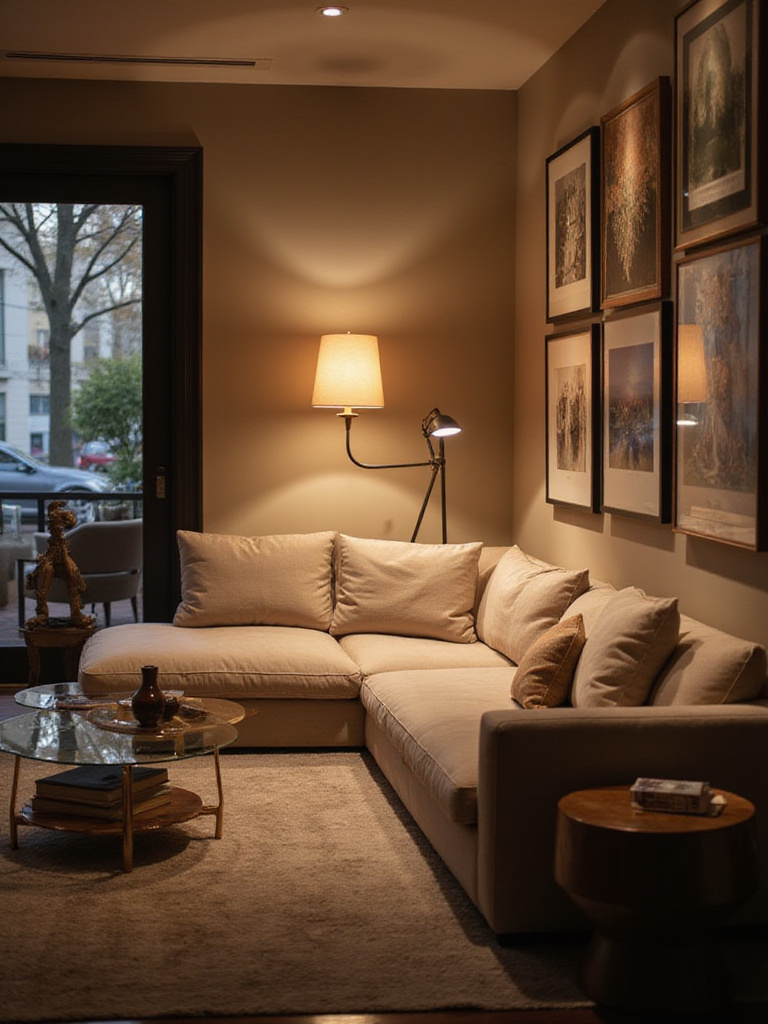
The impact of unobstructed light extends far beyond simple illumination—it actually changes how colors appear throughout the day and makes spaces feel significantly larger. When harsh afternoon sun becomes an issue, opt for light-filtering materials that diffuse brightness while maintaining your connection to the outdoors. Smart home integration allows these treatments to adjust automatically based on sun position, ensuring optimal light levels without constant manual adjustment.
Strategic window treatment choices also support your room’s clean aesthetic. Hardware should virtually disappear, whether through inside-mount installations or ultra-slim rods that extend well beyond window frames. This approach allows fabric to stack completely off the glass when open, maximizing both light and views.
For those worried about privacy in urban settings, consider top-down/bottom-up cellular shades that offer flexibility…
5. Create Focal Points with Large-Scale Art
Transform blank walls into captivating galleries by incorporating oversized artwork that commands attention and anchors your design scheme. Large-scale pieces eliminate the need for multiple smaller artworks, creating a cleaner, more impactful visual statement that perfectly aligns with contemporary principles. Whether you choose abstract paintings, photography, or mixed media installations, these substantial pieces become the room’s emotional and visual center.
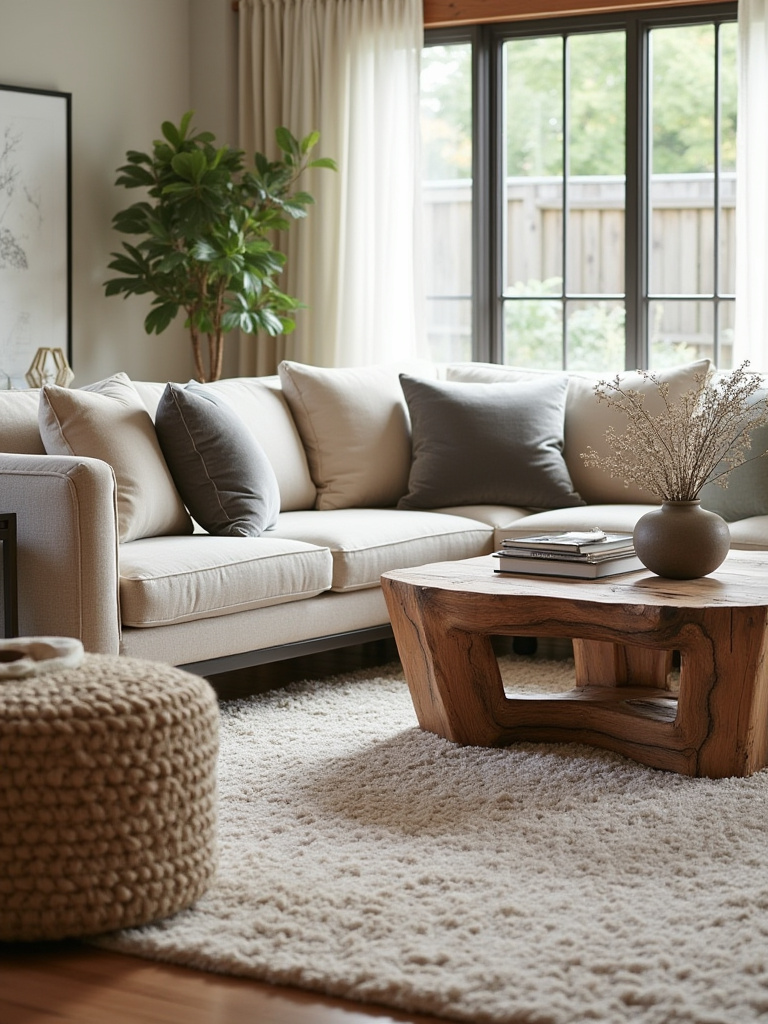
The psychology of scale works powerfully in contemporary design—one large artwork feels more intentional and sophisticated than a collection of smaller pieces. This approach also simplifies your decorating decisions while creating maximum impact. Consider how a seven-foot painting above your sofa instantly establishes the room’s personality, or how a striking photograph can introduce subtle color that influences your entire palette.
Lighting becomes crucial when showcasing large artwork. Picture lights or adjustable track lighting can highlight textures and colors while creating dramatic focal points during evening hours. The interplay between artificial light and your art creates depth and dimension that changes throughout the day.
Beyond the obvious placement above seating, consider using large art to define zones within open floor plans…
6. Integrate Smart Storage Solutions Seamlessly
Contemporary living demands storage that works invisibly, maintaining clean lines while accommodating the realities of daily life. Built-in solutions offer the most seamless integration—from floor-to-ceiling media walls with hidden compartments to window seat storage that doubles as additional seating. These custom approaches ensure every storage element feels intentional rather than added as an afterthought.
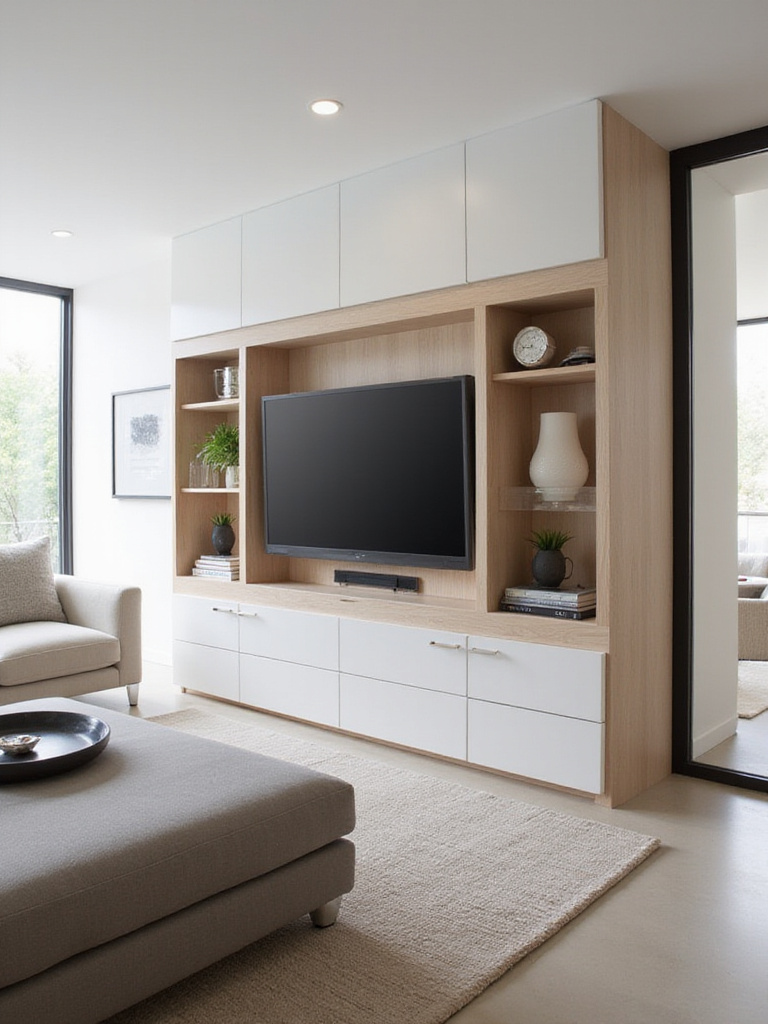
Multi-functional furniture becomes your secret weapon in achieving this invisible organization. Ottoman storage provides hidden space for throws and games while serving as extra seating or a coffee table. Modular shelving systems can be configured to display treasured objects while concealing everyday necessities behind sleek cabinet doors. The goal is maintaining visual calm while ensuring everything has its designated place.
Consider how technology can enhance your storage strategy. Motorized cabinets that open with a touch, or hidden compartments that slide out when needed, add an element of surprise while maintaining your room’s streamlined appearance. These solutions prove that contemporary design doesn’t require sacrificing functionality for aesthetics.
What separates artisanal storage solutions from mass-produced alternatives is the attention to detail in hardware and finishes…
7. Layer Ambient and Task Lighting Strategically
Contemporary lighting design moves far beyond a single overhead fixture to create layered illumination that adapts to different activities and moods throughout the day. Ambient lighting provides overall room illumination, while task lighting focuses on specific activities like reading or working. Accent lighting highlights architectural features or artwork, creating depth and visual interest that transforms your space from flat to dimensional.
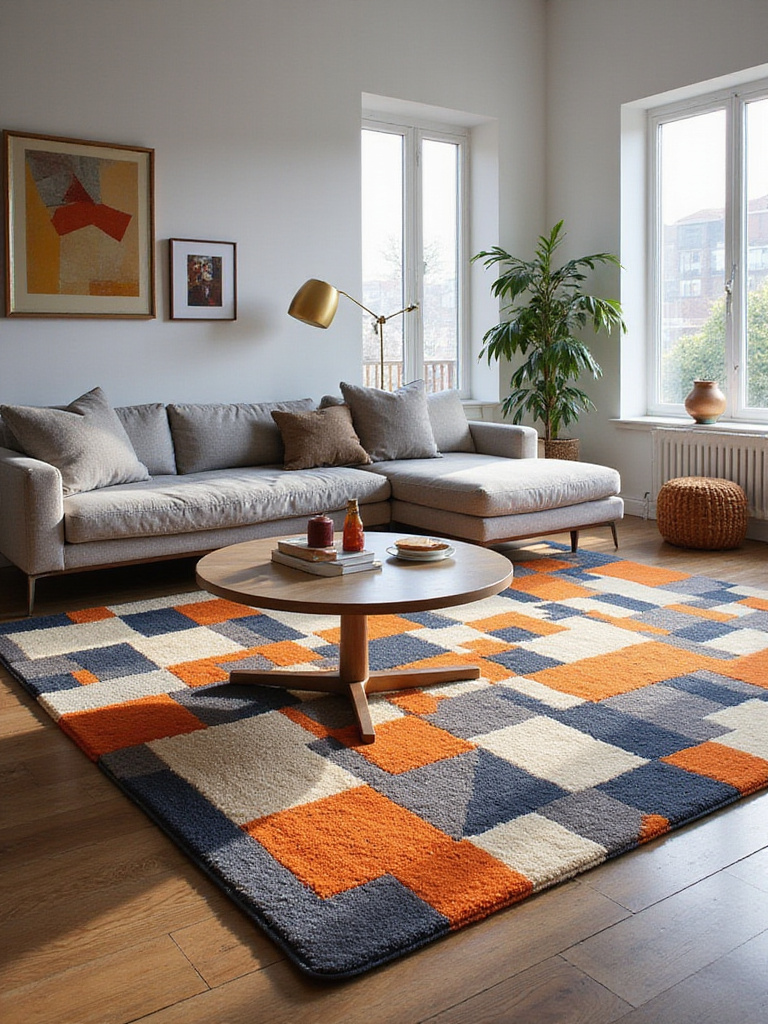
The magic happens when these layers work together seamlessly. Dimmable recessed lights might provide general illumination, while sleek floor lamps create cozy reading nooks and picture lights showcase your art collection. Smart home integration allows you to create custom scenes—bright and energizing for morning activities, warm and intimate for evening relaxation—all controlled from your smartphone or voice assistant.
Consider how different light temperatures affect your space’s mood. Warm light (2700K-3000K) creates intimacy and relaxation, while cooler light (3500K-4000K) promotes alertness and productivity. The ability to adjust both brightness and color temperature throughout the day supports your natural circadian rhythms while enhancing your room’s functionality.
Professional stylists approach lighting by first identifying how each area will be used throughout the day…
8. Incorporate Natural Elements for Organic Warmth
Balance contemporary sleekness with the inherent warmth of natural materials that bring life and texture to your space. Wood elements—whether in furniture, flooring, or accent walls—introduce organic patterns and warmth that prevent contemporary rooms from feeling cold or sterile. Stone, metal, and plant life add additional layers of natural beauty that create visual and emotional comfort.
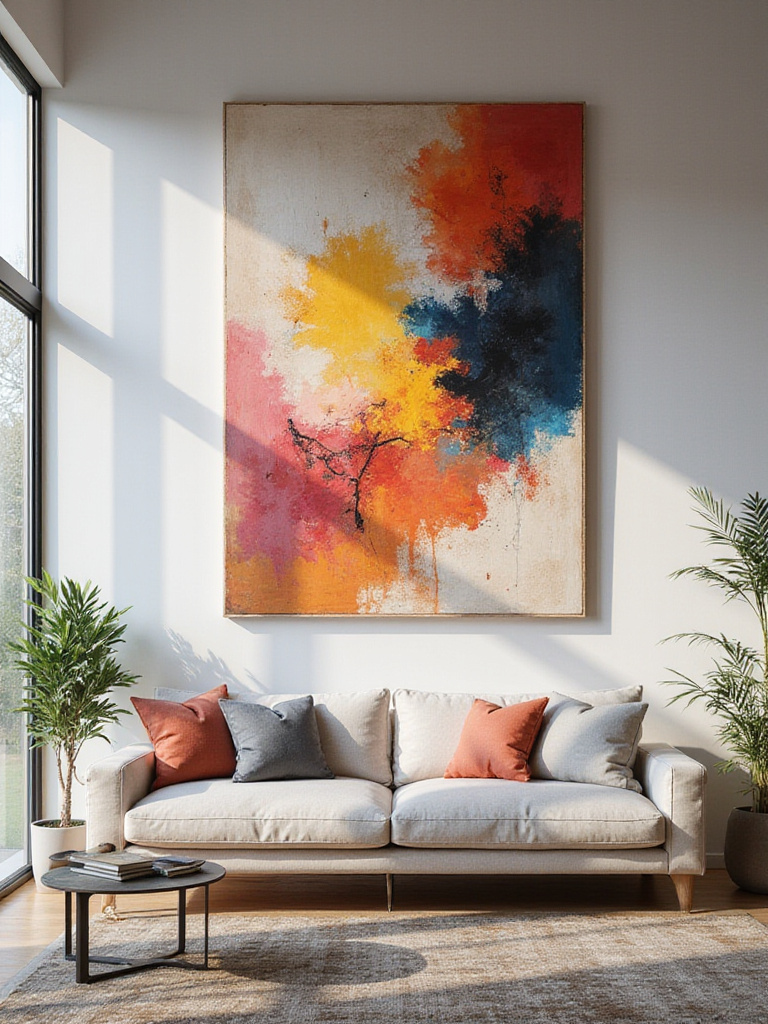
The key is selecting natural materials that complement rather than compete with your contemporary aesthetic. Clean-lined wooden furniture with visible grain patterns adds warmth while maintaining geometric simplicity. Live-edge wood elements or stone accent walls introduce organic shapes that provide beautiful contrast to your room’s structured elements. These natural touches create a biophilic connection that enhances well-being and comfort.
Plants deserve special consideration in contemporary design, serving as living sculptures that change and grow over time. Large floor plants like fiddle leaf figs or snake plants make bold statements, while smaller groupings of succulents or trailing plants add life to shelving and surfaces. The organic shapes and vibrant greens provide essential contrast to hard surfaces and neutral colors.
The sustainable journey of reclaimed materials involves giving new life to weathered barn wood or salvaged stone…
9. Choose Multi-Functional Furniture for Efficiency
Contemporary living celebrates furniture that works harder and smarter, serving multiple purposes while maintaining clean aesthetic lines. A storage ottoman becomes seating, a coffee table, and hidden organization all in one elegant piece. Extendable dining tables accommodate intimate dinners and larger gatherings without permanently consuming floor space. These intelligent choices maximize functionality while supporting the uncluttered aesthetic that defines contemporary style.

The beauty of multi-functional design lies in its adaptability to changing needs. Modular seating systems can be reconfigured for different activities—from movie nights requiring lounge-style comfort to cocktail parties needing more structured conversation areas. Nesting tables provide surface space when needed while tucking away cleanly when not in use, maintaining your room’s spacious feel.
Technology integration adds another layer of functionality to contemporary furniture. Media consoles with built-in charging stations, coffee tables with hidden refrigeration, or seating with integrated speakers demonstrate how furniture can evolve to support modern lifestyles without compromising design integrity.
Unlike single-purpose decor, multi-functional pieces adapt to your evolving lifestyle needs…
10. Define Spaces with Geometric Area Rugs
Area rugs serve as powerful tools for defining zones and introducing pattern in contemporary spaces, but the key lies in selecting geometric designs that complement rather than overwhelm your clean aesthetic. Bold stripes, subtle chevrons, or abstract geometric patterns can anchor seating areas while adding visual interest that enhances rather than competes with your furniture choices.
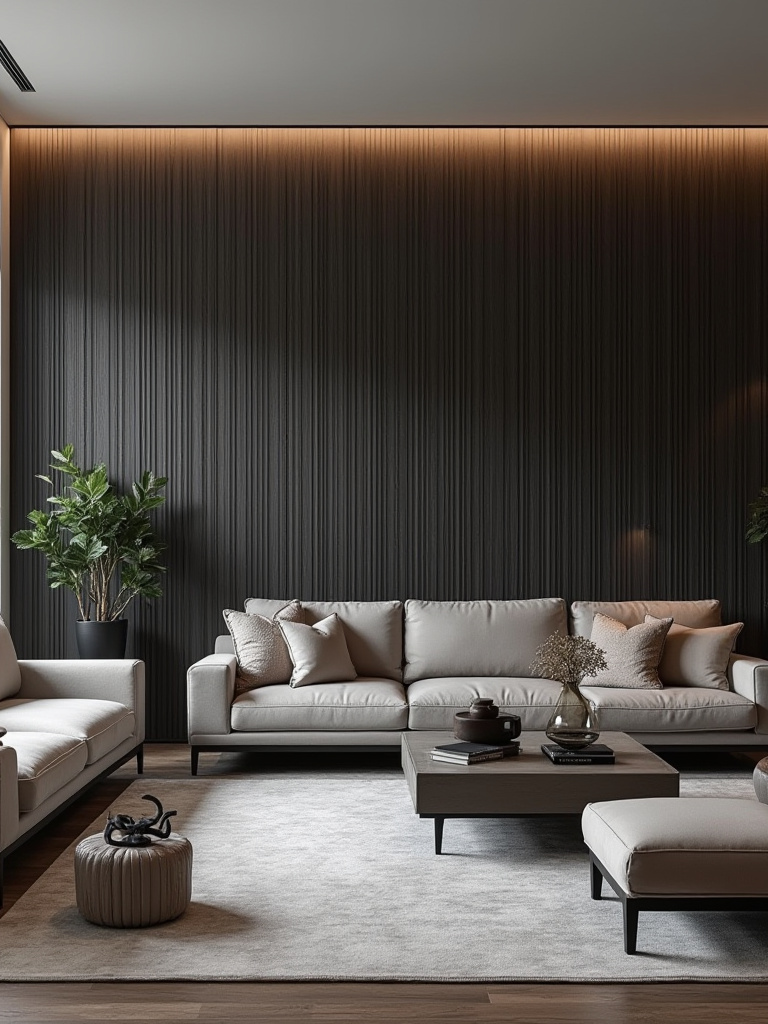
Scale becomes crucial when selecting geometric rugs for contemporary spaces. Larger rugs that accommodate all furniture legs create cohesive zones, while smaller accent rugs can highlight specific areas like entryways or reading nooks. The geometric patterns should feel intentional and sophisticated—think museum-quality designs rather than busy, overwhelming motifs that distract from your carefully curated aesthetic.
Color plays an equally important role in rug selection. Monochromatic geometric patterns in varying shades of gray or beige maintain sophistication while adding textural interest. Alternatively, rugs that introduce a single accent color through geometric patterns can tie together other colorful elements throughout your space.
The visual weight balances perfectly when you choose patterns that echo other geometric elements…
11. Embrace Negative Space for Visual Breathing Room
Contemporary design celebrates what’s not there as much as what is, using negative space strategically to create visual calm and emphasize the beauty of carefully chosen elements. This principle means resisting the urge to fill every corner or surface, instead allowing empty areas that let your eye rest and your featured pieces truly shine. The result is a sophisticated space that feels both complete and uncluttered.
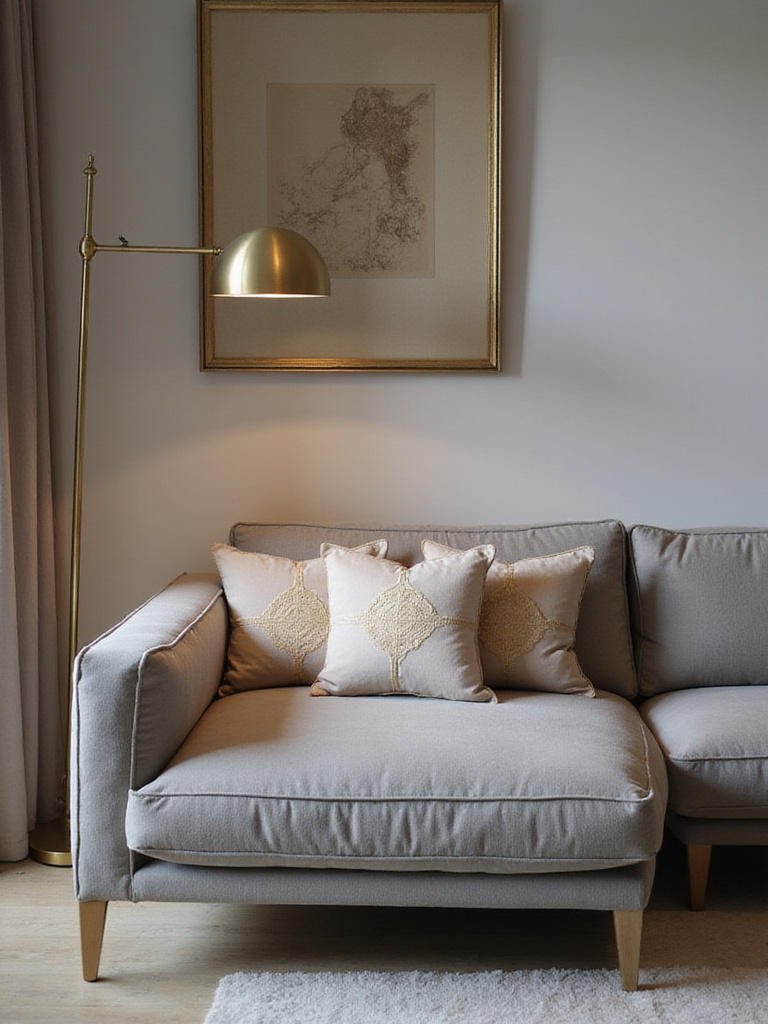
Negative space works particularly powerfully around statement furniture or artwork, providing the visual breathing room these pieces need to make their full impact. A sculptural chair becomes more striking when surrounded by open floor space, while a large painting gains drama when positioned on an otherwise empty wall. This restraint requires confidence but creates exponentially more sophisticated results than cramming multiple elements together.
The psychological benefits of negative space are profound—rooms with adequate visual breathing room feel more peaceful and less overwhelming. This approach also makes spaces appear larger and more luxurious, as generous spacing around furniture and decor suggests abundance rather than necessity-driven arrangement.
The finishing touch that elevates the entire composition is knowing when to stop adding elements…
12. Select Statement Lighting as Functional Art
Contemporary lighting transcends mere illumination to become sculptural elements that define your space’s personality and style. A dramatic pendant light over your dining area or an architecturally interesting floor lamp beside your seating creates focal points that serve dual purposes—providing necessary light while contributing to your room’s artistic composition. These pieces often become conversation starters that reflect your design sophistication.
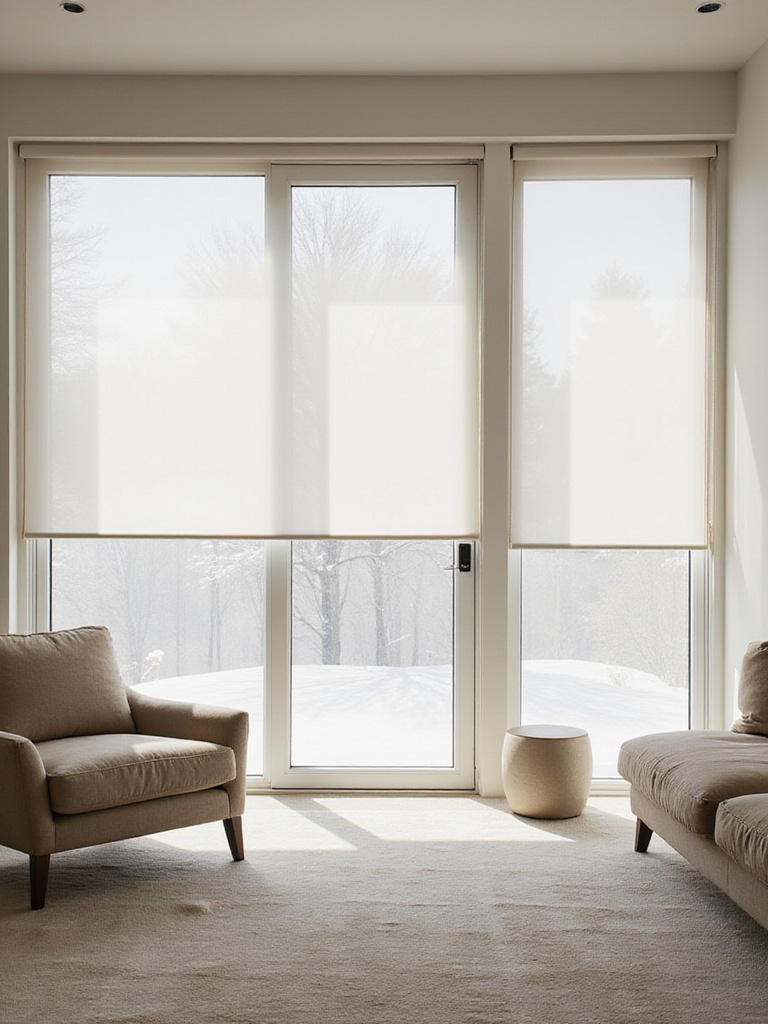
The most successful statement lighting balances bold form with practical function. An oversized pendant might feature an interesting geometric shape while providing ample task lighting for dining or work activities. Similarly, a sculptural floor lamp with adjustable elements can create ambient lighting while serving as a striking vertical accent that draws the eye upward and emphasizes your room’s height.
Consider how statement lighting interacts with natural light throughout the day. Pieces with interesting cutouts or translucent materials create fascinating shadow patterns during daylight hours, while their illuminated beauty takes center stage during evening hours. This dual personality adds depth and interest that changes as your space transitions from day to night.
The unexpected pairing that always works is combining industrial-inspired fixtures with softer contemporary elements…
13. Integrate Technology Invisibly for Modern Convenience
True contemporary design seamlessly integrates technology to enhance daily life without compromising aesthetic integrity. Hidden speakers, concealed charging stations, and smart home controls should work invisibly, providing convenience while maintaining your space’s clean visual lines. The goal is creating a responsive environment that anticipates your needs without announcing its technological capabilities.
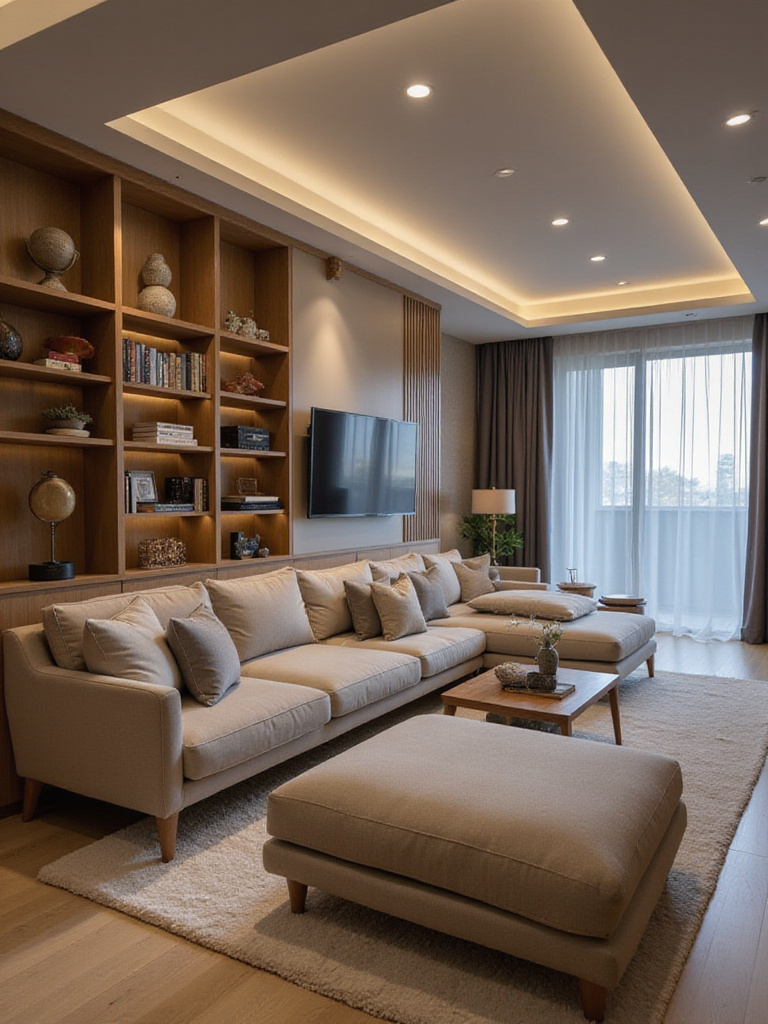
Smart home integration allows your living room to adapt automatically to different activities and times of day. Automated lighting scenes can shift from bright and energizing during morning coffee to warm and intimate for evening relaxation. Motorized window treatments adjust based on sun position, while hidden audio systems provide immersive sound without visible speakers cluttering your carefully designed space.
The key to successful technology integration lies in planning during the design phase rather than adding devices as afterthoughts. Built-in charging stations, concealed cable management, and strategically placed outlets ensure your space remains uncluttered while supporting modern connectivity needs. Wireless technologies minimize visible connections while maintaining full functionality.
When clients ask us about balancing high-tech functionality with contemporary aesthetics, we focus on invisible integration…
14. Create Conversation Areas with Intimate Seating
Contemporary open-plan living requires intentional design to create intimate conversation areas within larger spaces. Strategic furniture arrangement can transform vast rooms into cozy gathering spots that encourage meaningful interaction and connection. The key lies in creating multiple seating vignettes that feel separate yet connected, allowing for both large group gatherings and smaller, more personal conversations.
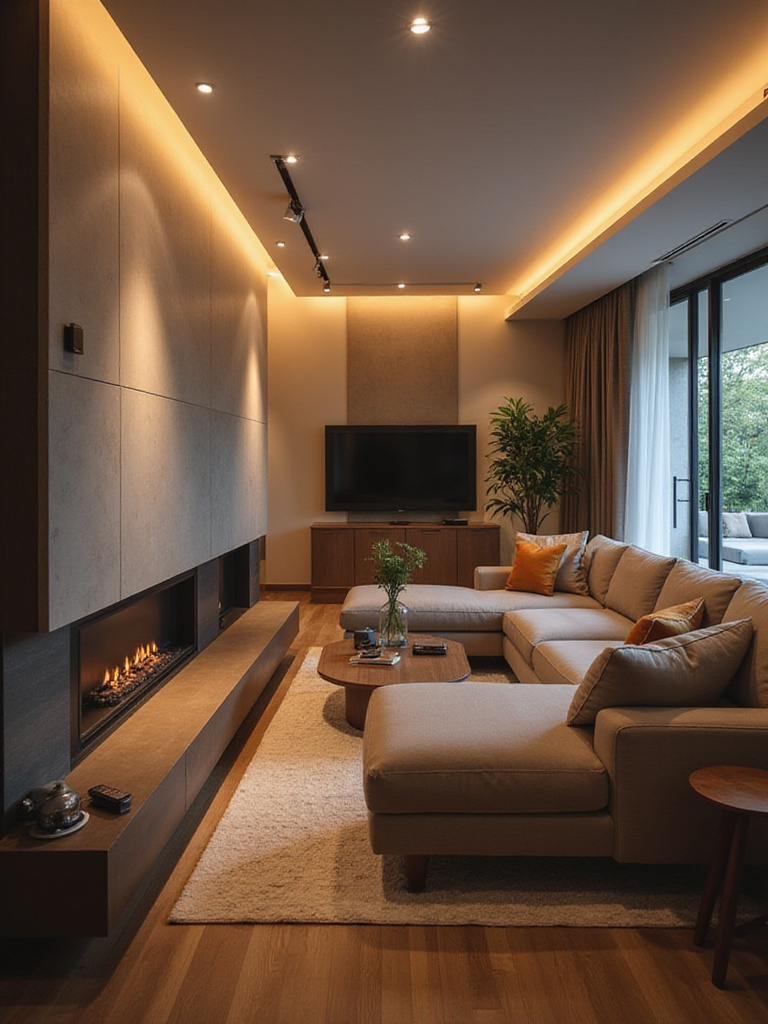
Successful conversation areas typically seat 4-6 people with furniture arranged to facilitate eye contact and easy communication. Sofas and chairs should be positioned within 8 feet of each other, with coffee tables or side tables providing convenient surfaces for drinks and personal items. Area rugs help define these zones while lighting creates intimate ambiance that encourages lingering and connection.
The beauty of well-designed conversation areas lies in their flexibility—they can accommodate everything from family game nights to sophisticated cocktail gatherings. Modular seating allows for easy reconfiguration based on the occasion, while consistent design elements ensure all arrangements feel intentional and cohesive.
Picture the warmth of evening conversations around carefully arranged seating that draws people together naturally…
15. Add Personality Through Curated Collections
While contemporary design celebrates restraint, carefully curated collections of meaningful objects inject personality and warmth that transform houses into homes. The key lies in thoughtful editing and strategic display—choosing fewer, more significant pieces rather than numerous small items that create visual clutter. These collections might include travel souvenirs, vintage finds, or contemporary art pieces that reflect your interests and experiences.
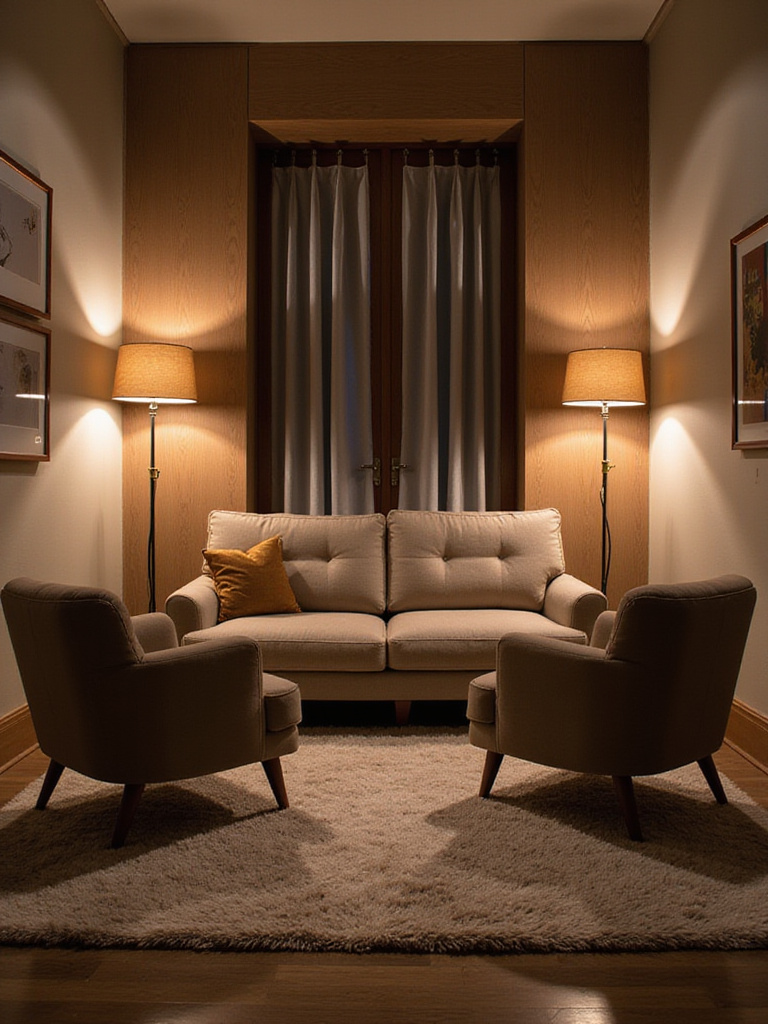
Successful collections work best when unified by common elements like color, material, or theme, while varying in size and texture to create visual interest. A collection of ceramic vessels in varying heights and shapes, all in similar neutral tones, creates sophisticated display opportunities on floating shelves or console tables. The restraint in quantity allows each piece to be appreciated individually while contributing to a cohesive whole.
Display strategies become crucial in contemporary spaces where every element must earn its place. Floating shelves, built-in niches, or carefully styled console tables provide platforms for rotating seasonal displays that keep your space feeling fresh and personal. The goal is creating moments of discovery and delight without overwhelming your clean aesthetic.
The cultural heritage preserved in each carefully chosen piece includes stories that make your space uniquely yours…
16. Incorporate Metallic Accents for Sophisticated Glamour
Strategic metallic elements add sophisticated glamour to contemporary spaces without overwhelming their clean aesthetic. The key lies in restraint and consistency—choosing one primary metallic finish and distributing it thoughtfully throughout your space through hardware, lighting, and accent pieces. Whether you prefer warm brass, cool chrome, or dramatic black steel, metallic elements add light reflection and visual interest that elevates your design.
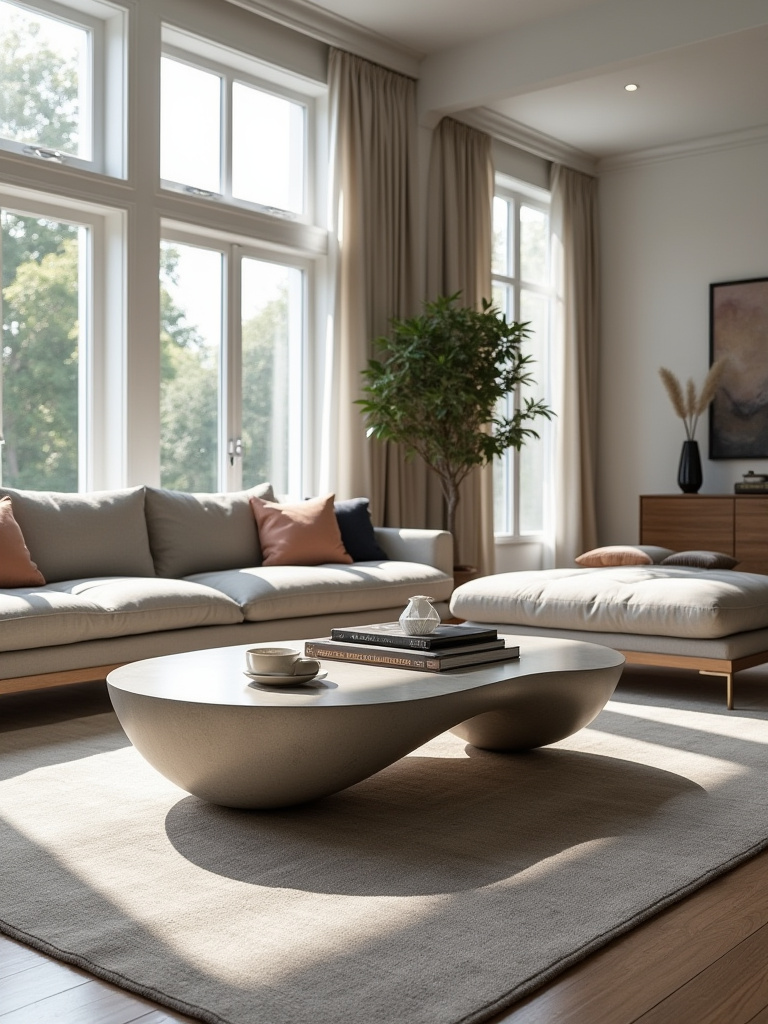
Metallic accents work particularly well in contemporary spaces because they complement the clean lines and sophisticated palette while adding just enough sparkle to prevent sterility. Picture frames, lamp bases, cabinet hardware, and decorative objects in your chosen metallic create cohesive threads that tie your design together. The reflective qualities of metal also enhance natural light, making spaces feel brighter and more dynamic.
The most sophisticated approach involves mixing different finishes within the same metallic family—combining brushed and polished brass, for example, or matte and glossy black steel. This creates depth and interest while maintaining the cohesive look that contemporary design demands. Avoid mixing different metallic colors, which can create visual chaos in otherwise serene spaces.
The investment value comes from choosing quality metallic finishes that will patina beautifully over time…
17. Design for Flexibility and Adaptability
Contemporary living demands spaces that adapt to changing needs, seasons, and life circumstances. Flexible design means choosing furniture and layouts that can be easily reconfigured for different activities—from intimate family dinners to large holiday gatherings. This adaptability ensures your space remains functional and relevant as your lifestyle evolves, making it a long-term investment in comfortable living.
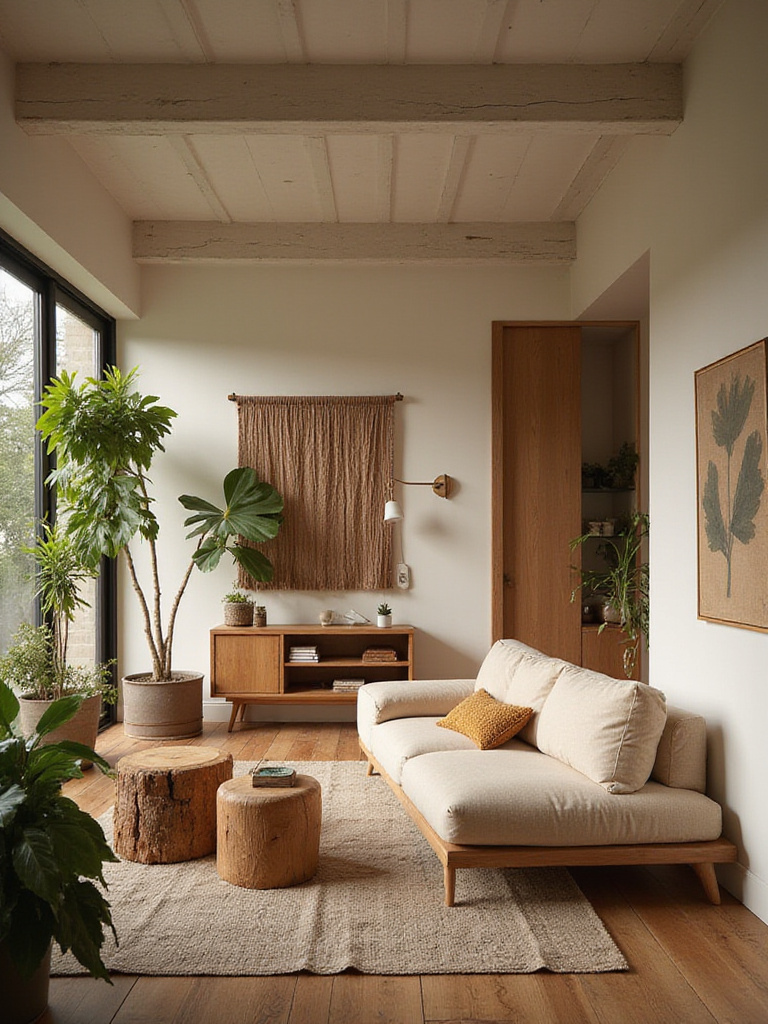
Modular furniture systems offer the ultimate in flexibility, allowing you to reconfigure seating arrangements based on current needs. Lightweight accent chairs can be moved easily for additional seating, while nesting tables provide extra surface space when needed without permanently consuming floor area. The goal is creating a space that feels complete in its everyday configuration while offering expansion possibilities for special occasions.
Seasonal adaptability adds another layer of flexibility to contemporary design. Lightweight throws and pillows can transform your color palette for different seasons, while adjustable lighting allows you to create appropriate ambiance for shorter winter days or longer summer evenings. This approach keeps your space feeling fresh and responsive to natural rhythms.
Beyond the trends, the enduring appeal of flexible design comes from its ability to grow with your changing needs…
18. Prioritize Quality Materials and Craftsmanship
Contemporary design’s emphasis on clean lines and minimal ornamentation means that material quality and craftsmanship become paramount. Every surface, texture, and detail is visible and important, making investment in well-made pieces essential for achieving sophisticated results. Quality materials age beautifully, developing patina and character that mass-produced alternatives simply cannot match.
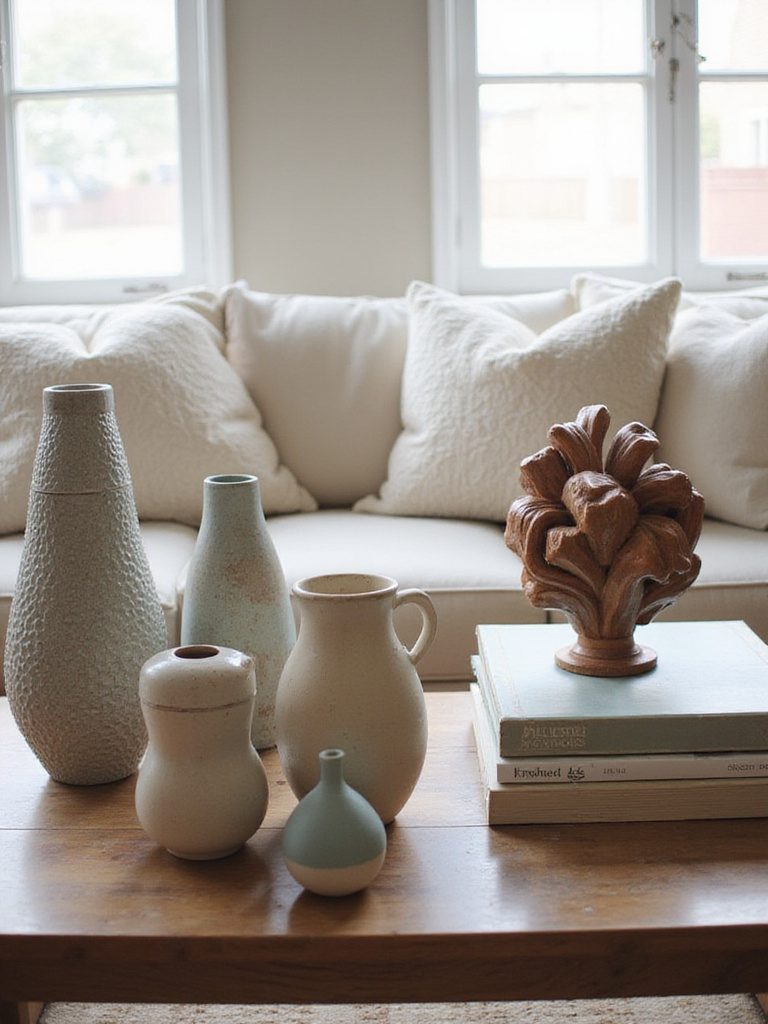
Natural materials like solid wood, genuine leather, and natural stone not only look and feel superior but also contribute to healthier indoor environments. These materials often improve with age, developing unique characteristics that reflect your family’s life and use. The initial investment in quality pieces pays dividends through longevity, beauty, and the satisfaction of living with objects that feel substantial and well-made.
Craftsmanship details become focal points in contemporary spaces where ornamentation is minimal. Beautiful joinery, perfect proportions, and flawless finishes create the visual interest that pattern and decoration might provide in other styles. These details reward close inspection while contributing to the overall sense of quality and sophistication that defines successful contemporary design.
The traditional methods used in creating quality pieces result in furniture that becomes more beautiful with age and use…
19. Balance Cool and Warm Elements for Comfort
The final key to successful contemporary design lies in balancing cool and warm elements to create spaces that feel sophisticated yet inviting. While contemporary style often emphasizes cool materials like concrete, steel, and glass, introducing warm elements through wood, textiles, and lighting prevents spaces from feeling sterile or unwelcoming. This balance creates the comfortable elegance that makes contemporary homes truly livable.
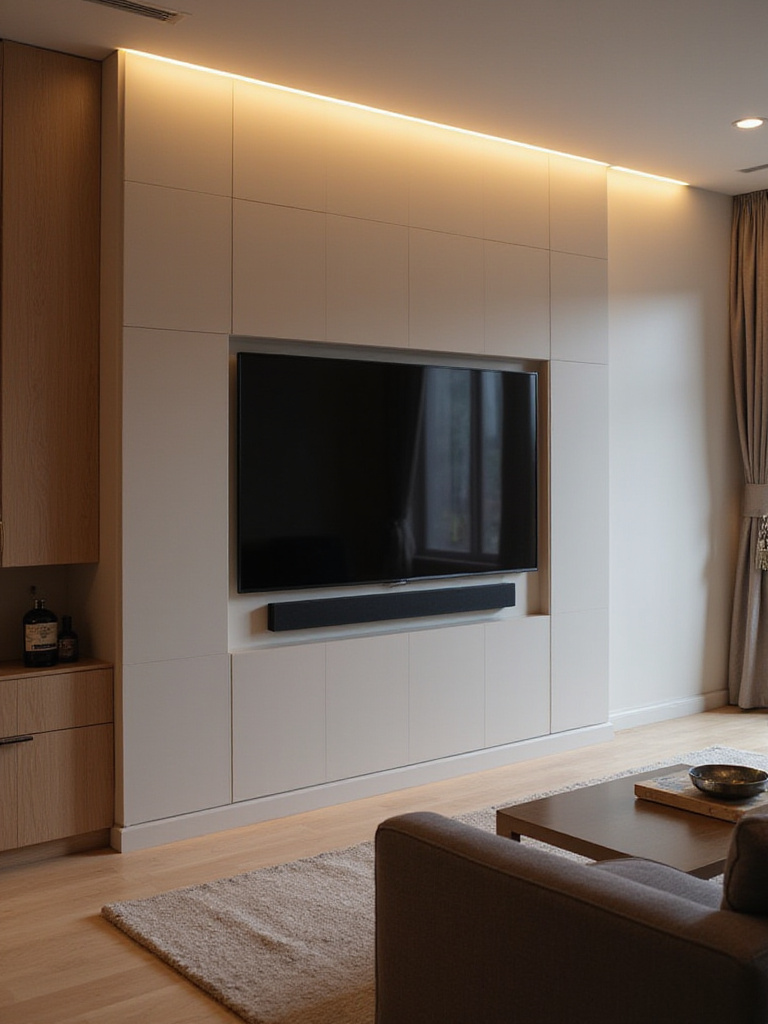
Warm lighting plays a crucial role in this balance, softening hard surfaces and creating intimate ambiance during evening hours. Table lamps with warm LED bulbs, candles, and fireplace elements introduce the cozy glow that transforms sleek contemporary spaces into welcoming retreats. The interplay between cool architectural elements and warm atmospheric lighting creates depth and emotional comfort.
Textile choices offer another opportunity to introduce warmth without compromising contemporary aesthetics. Soft throws in natural fibers, plush area rugs, and comfortable seating fabrics add tactile warmth that invites relaxation and use. The key is choosing textures and colors that complement rather than compete with your space’s clean lines and sophisticated palette.
The emotional response this balance evokes begins with feeling immediately comfortable in your beautifully designed space…
Conclusion
Creating a contemporary living room that perfectly balances style and comfort is about making thoughtful choices that reflect your lifestyle while embracing the principles of clean design. From maximizing natural light and incorporating smart storage to selecting quality materials and creating flexible layouts, each decision contributes to a space that feels both sophisticated and genuinely livable. The beauty of contemporary design lies in its adaptability—these principles work whether you’re designing a compact urban apartment or a spacious suburban home.
Remember that contemporary style isn’t about following rigid rules or creating museum-like spaces. Instead, it’s about curating an environment that supports your daily life while celebrating beautiful design. Start with one or two elements that resonate most strongly with your vision—perhaps introducing a statement piece of art or reorganizing your space to maximize natural light—and build from there. The key is patience and intention, allowing your space to evolve naturally as you discover what works best for your unique lifestyle.
Your contemporary living room should ultimately reflect who you are while providing the comfort and functionality you need. Trust your instincts, invest in quality pieces that you truly love, and don’t be afraid to let your personality shine through carefully chosen details. The result will be a space that feels both timelessly elegant and completely, authentically yours.
